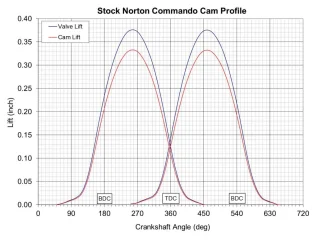Test of a home market Combat Interestate by Motorcyclist Magazine of the UK in September 1972 lists overall gear ratio in top at 4.84 to one.
I believe this correlates to a 19 tooth cs.
Cycle Guide in the US lists the same 4.84 ratio in their US Combat test. Modern Cycle of the US lists the same 4 84 ratio and gives us the info that this bike has a 19 tooth cs.
A test of another UK home market Combat Interstate by Motorcycle Mechanics, also done in September 1972 states " even with the 19 tooth gearbox sprocket the Interstate does not like going over 6500 rpm"
All of the Combats tested in the Norton Commando Ultimate Portfolio , whether UK market or US, list 19 tooth as the as supplied gearbox sprocket.
Glen
I believe this correlates to a 19 tooth cs.
Cycle Guide in the US lists the same 4.84 ratio in their US Combat test. Modern Cycle of the US lists the same 4 84 ratio and gives us the info that this bike has a 19 tooth cs.
A test of another UK home market Combat Interstate by Motorcycle Mechanics, also done in September 1972 states " even with the 19 tooth gearbox sprocket the Interstate does not like going over 6500 rpm"
All of the Combats tested in the Norton Commando Ultimate Portfolio , whether UK market or US, list 19 tooth as the as supplied gearbox sprocket.
Glen
Last edited:

